
Virtual remote appointments are available. Contact us for a video telehealth evaluation.

All appointments conducted by our Board Certified doctor and not assistants or non-physician providers.
Varicose Veins
Varicose veins are often misunderstood as simply a cosmetic issue, but when left untreated, they can progress into a more serious condition called chronic venous insufficiency (CVI). You are not alone, nearly 25% of the global adult population is affected.
Healthy leg veins have valves that keep blood flowing to the heart. Vein disease develops when the valves stop working properly and allow blood to flow backward (i.e., reflux) and pool in the lower leg veins.
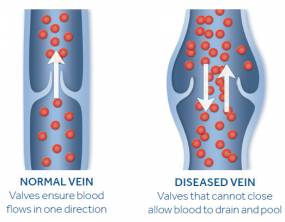
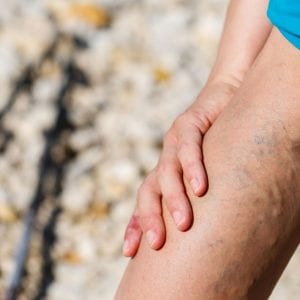
Signs and Symptoms
- Varicose veins
- Aching or pain
- Swelling
- Cramping
- Heaviness or tiredness
- Itching
- Restlessness
- Skin changes
- Brown, colored skin
- Open sores or ulcers
Risk Factors
- Family history
- Lack of exercise
- Leg injury or trauma
- Prolonged sitting or standing
- Obesity or excess weight
- Current or previous pregnancies Smoking
How are varicose veins treated?
The goal of treatment for vein disease is to reduce or stop the backward flow of blood.
The following may be prescribed to treat your varicose veins. Our doctor can help you decide which treatment is best for you:
- Compression stockings
- Removing diseased vein
- Closing diseased vein (through thermal or non-thermal treatment)
With proper treatment, the progressive symptoms of vein disease are preventable.
Without treatment, signs and symptoms may progress and significantly impact quality of life, and lead to venous leg ulcers.
Which varicose vein treatment is best?
While there are many options to closing the abnormal veins, our practice uses primarily non-thermal (without heat) methods as they are the least painful, safest and most effective methods. See below how each one is performed.
Varithena
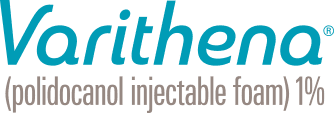
Varithena® is the brand name of an injectable polidocanol foam medication. This is a prescription foam that fills and treats the desired section of the vein. The diseased vein collapses and the foam is deactivated. When the malfunctioning vein collapses, blood flow shifts to healthier veins nearby.
- Our Board Certified Radiologist will perform an ultrasound of your veins
- A topical and local numbing medication is applied making the treatment essentially painless
- The foam is then administered through a tiny catheter directly into the malfunctioning vein under ultrasound guidance, causing the vein to close down
- It usually takes the doctor less than an hour to administer
- Following administration, the doctor applies bandages and compression stockings to the leg
Gentle
The gentle, noninvasive treatment requires just one or two sticks for a treatment.
Minimal downtime
Most often, people can go back to doing many activities the very same day as treatment.
Fast Procedures
The entire procedure usually takes less than an hour.
Short treatment process
Most people only need one treatment to see results. In Varithena pivotal trials, only 3.4% of patients needed to re-treat an area included in the initial treatment session.1
Insurance coverage
Insurance carriers may cover treatment. Coverage may depend on the severity of the varicose veins and symptoms. Your physician’s office may be able to help you understand your coverage.
Why Varithena treatment for Varicose Veins?
Could Varithena treatment be right for you?




Venaseal
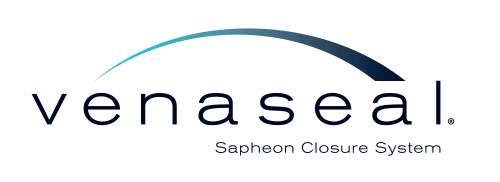
Venaseal is made of a substance referred to as cyanoacrylate – a clear, free-flowing superglue. The superglue is sterile and safe for insertion into the abnormal vein. Cyanoacrylate has been used for years within the medical community as a strong adhesive and is a trusted substance that does no harm to the body.
- Our Board Certified Radiologist will perform an ultrasound of your veins
- A topical and local numbing medication is applied making the treatment essentially painless
- The glue is then administered through a tiny catheter directly into the malfunctioning vein under ultrasound guidance, causing the vein to close down
- It usually takes the doctor less than an hour to administer
- Following administration, the doctor applies bandages and compression stockings to the leg
ClariVein
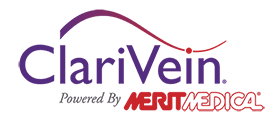
ClariVein®IC is an innovative infusion catheter with a rotating wire tip that disperses medication into wall of the abnormal vein causing it to collapse.
- Our Board Certified Radiologist will perform an ultrasound of your veins
- A topical and local numbing medication is applied making the treatment essentially painless
- A tiny catheter is placed into the malfunctioning vein
- The rotating wire catheter of the ClariVein is then inserted into the vein
- Once the tip is in place, the wire will start rotating in a 360-degree spinning motion.
- A medication is administered through the tip of the rotating wire into the walls of the vein causing it to close down
Benefits of non-thermal treatments methods:
- Treatment under 1 hour
- Virtually painless
- Non-surgical
- Outpatient in office procedure
- No downtime
- Return to normal activity
- No laser or heat required
- No nerve damage risk
- No skin ulcer risk
Thermal methods include Endovenous Laser Therapy (EVLT) Or Ablation (EVLA). While these methods are very effective, they are associated with increased risk and pain than the non-thermal methods. As an advanced vein practice we are continuously moving our practice towards innovative solutions that receive the highest patient satisfaction and results, without the risks.
Results
You have many options for not only treatments but also healthcare providers. There are image-guided specialists, such as our physician, and other physicians or assistants that just dabble in these image-guided procedures.

You can rest assured that you are being taken care not only by a vascular specialist but also by a physician that is board certified in imaging, which is heavily relied upon to have a successful painless result. We take pride and integrity in the work we do and put patient experience before business.
The above information explains what is involved and the possible risks. It is not meant to be a substitute for informed discussion between you and your doctor, but can act as a starting point for such a discussion.
